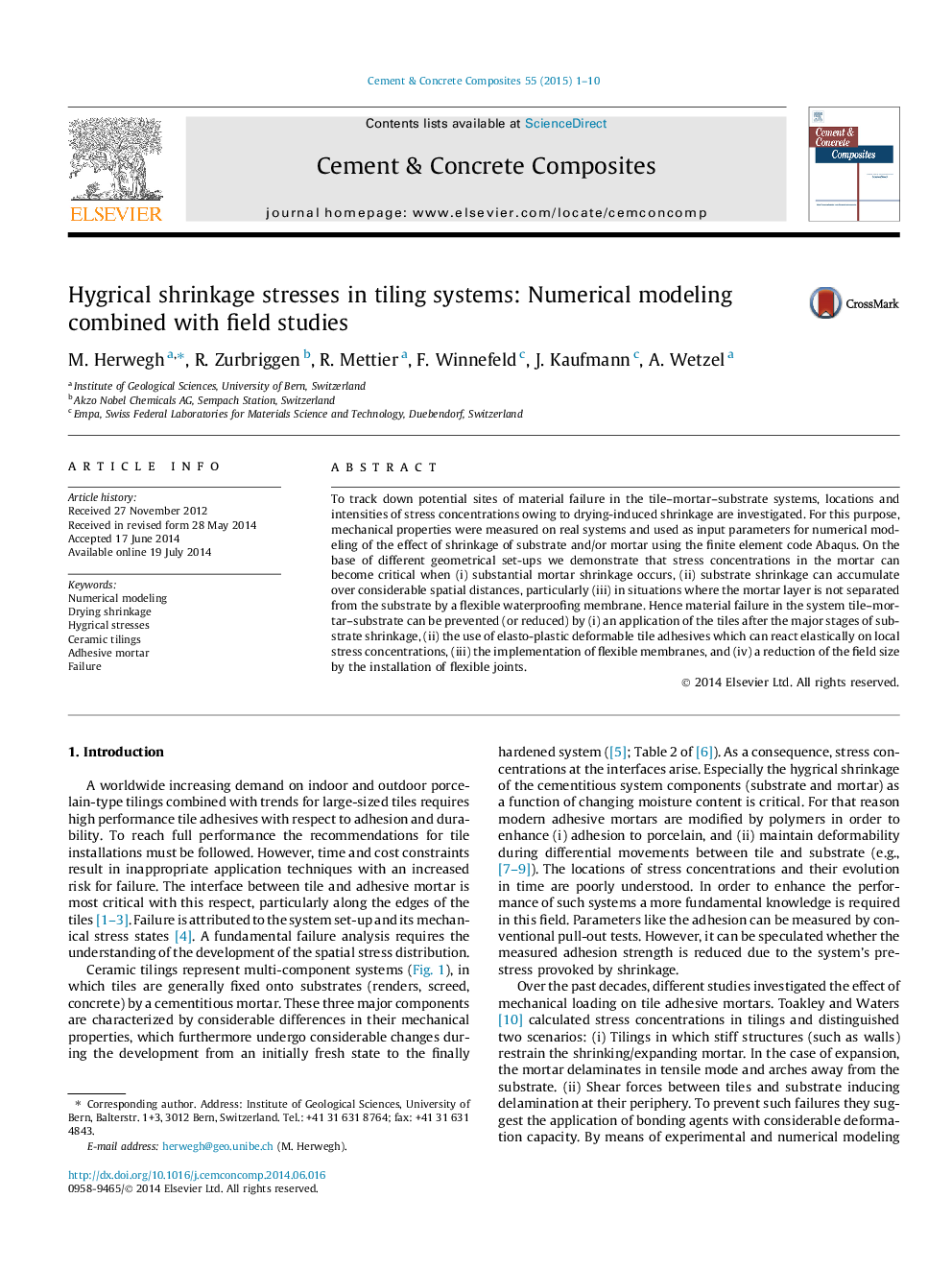| Article ID | Journal | Published Year | Pages | File Type |
|---|---|---|---|---|
| 7884101 | Cement and Concrete Composites | 2015 | 10 Pages |
Abstract
To track down potential sites of material failure in the tile-mortar-substrate systems, locations and intensities of stress concentrations owing to drying-induced shrinkage are investigated. For this purpose, mechanical properties were measured on real systems and used as input parameters for numerical modeling of the effect of shrinkage of substrate and/or mortar using the finite element code Abaqus. On the base of different geometrical set-ups we demonstrate that stress concentrations in the mortar can become critical when (i) substantial mortar shrinkage occurs, (ii) substrate shrinkage can accumulate over considerable spatial distances, particularly (iii) in situations where the mortar layer is not separated from the substrate by a flexible waterproofing membrane. Hence material failure in the system tile-mortar-substrate can be prevented (or reduced) by (i) an application of the tiles after the major stages of substrate shrinkage, (ii) the use of elasto-plastic deformable tile adhesives which can react elastically on local stress concentrations, (iii) the implementation of flexible membranes, and (iv) a reduction of the field size by the installation of flexible joints.
Related Topics
Physical Sciences and Engineering
Engineering
Industrial and Manufacturing Engineering
Authors
M. Herwegh, R. Zurbriggen, R. Mettier, F. Winnefeld, J. Kaufmann, A. Wetzel,
